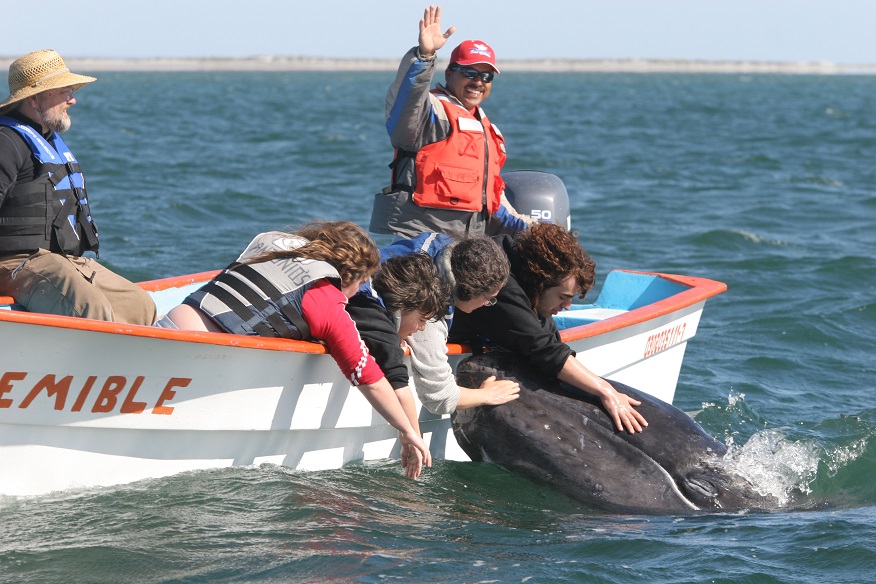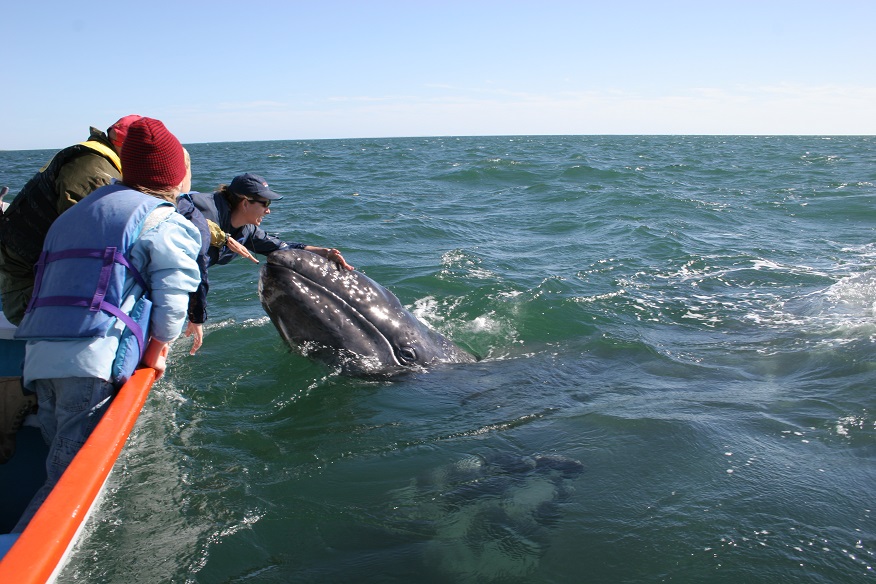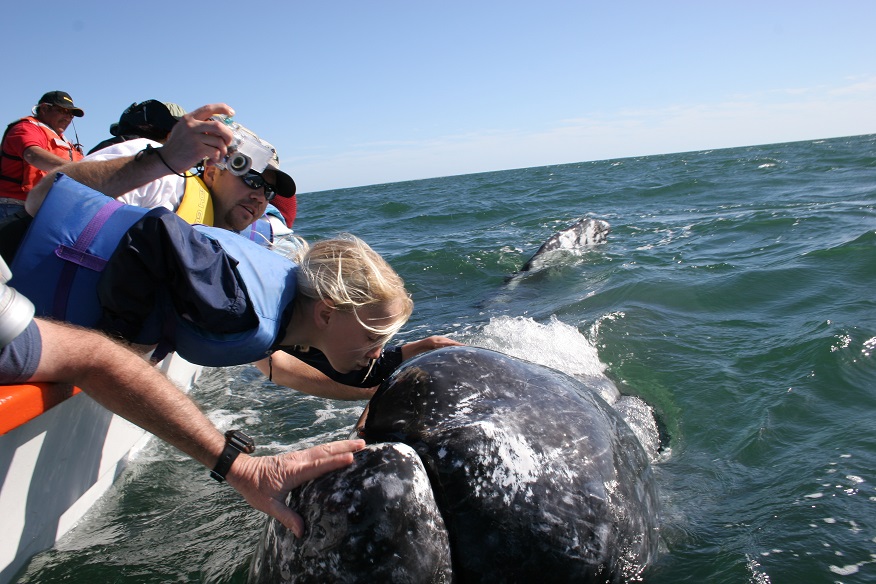Driving Baja
Part of the allure of this trip is traveling through Baja. Once we cross through Mexicali and head south, we will be on the Sea of Cortez side of Baja and encounter some rugged scenery on our way to San Felipe, a coastal town where we will spend the night. The next leg of the trip will be a scenic drive from San Felipe to the beautiful oasis town of San Ignacio along the coast with some overlooks before traveling inland and driving through part of the unique boojum forest of Baja.
Whales
Each winter, hundreds of gray whales return to their traditional breeding and birthing grounds along the Pacific coast of Mexico’s Baja Peninsula. Their 6,000-mile migration from Alaska’s Bering Sea to these sheltered lagoons is the longest mammal migration on Earth. Nearly hunted to extinction in the past, these gentle leviathans have made a dramatic comeback. Friendly and engaging, they are often intrigued with humans, swimming right up to our open boats in the warm, shallow waters of San Ignacio Lagoon. We may see mothers “showing off” their babies, and our small groups frequently interact with them at close range. The whales entertain us with breaching and spy-hopping, and we sometimes observe mating behavior as well.
Though whale watching is a year-round activity, Baja whale season peaks in the winter months of January through March. However, you can expect to see gray whales off the coast of the Baja peninsula from late December through April.
The first of the gray whales arrive in Baja’s calving lagoons by late December to early January, beginning the Baja gray whale season. Among the first gray whale arrivals in Baja are the pregnant mothers who seek the protection of warm, calm waters in which to bear their calves. Single, fertile female whales seeking mates are also leading the charge. The majority of the gray whales reach Baja’s lagoons by mid-February to mid-March. Once there, they can be seen socializing, mating and giving birth in the calving lagoons.
We will arrive at Antonio’s camp late in the morning of Feb. 25, check in and have lunch there. We will have the first of four scheduled boat trips that afternoon to observe and potentially interact with the whales, and when we return enjoy happy hour and dinner at the camp. The next day we will have breakfast, a morning boat tour, lunch, an afternoon boat tour, happy hour, and dinner. Our final day at the camp will include breakfast, a morning boat tour, and lunch before heading back to San Ignacio.
Other activities
The afternoon of the last day of whale watching we may travel east of San Ignacio and visit the coastal town of Santa Rosalia. On our way there we will pass by the dormant volcanos of Las Tres Virgenes. Santa Rosalia is a historic mining town founded by the French. There is the La Iglesia de Santa Barbara, a metal church designed by Gustave Eiffel, and shipped from France in the 1890’s. We will spend the night in San Ignacio before heading back home.
On our journey home, we will take a detour and visit the scenic Sierra de San Francisco, and may visit the cave paintings of Cueva del Raton. The paintings in the Sierra de San Francisco are thought to be somewhere around 2,000 years old, but recent carbon dating tests have suggested that some of the paintings may have been painted as many as 7,500 years ago.






